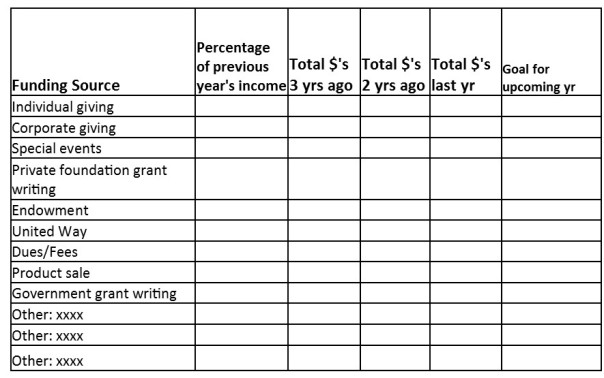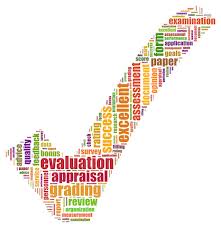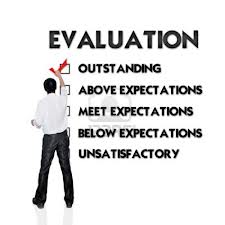 Welcome to the fourth part of this ongoing series of posts on how to write your non-profit organization’s annual resource development plan. As I’ve previously mentioned, this series was inspired by how many DonorDreams blog readers were clicking on the “Time to start writing your 2015 resource development plan” post, which I wrote a year ago.
Welcome to the fourth part of this ongoing series of posts on how to write your non-profit organization’s annual resource development plan. As I’ve previously mentioned, this series was inspired by how many DonorDreams blog readers were clicking on the “Time to start writing your 2015 resource development plan” post, which I wrote a year ago.
The first post in this series was titled “Writing your resource development plan in steps: Step One,” and it focused exclusively on the importance of putting the right people at the table. The second post was “Writing your resource development plan in steps: Step Two,” and addressed pre-planning activities such as evaluation and assessment. The last post — “Writing your resource development plan in steps: Step Three” — walked readers through writing a statement of fundraising purpose as well as developing both financial and non-financial goals.
Today’s post is all about the next step, which of course is about developing strategies and tactics. Enjoy!
In the previous post in this series, we talked about two different types of goals — financial goals and process goals. We will mirror that approach in today’s post in order to keep things clear.
Strategies for financial goals
 Identify all of the fundraising campaigns, events, and activities you plan on doing in the upcoming year. Here are a few examples: golf outing, gala dinner & auction, direct mail, major gifts initiative, annual campaign, grant writing, etc.
Identify all of the fundraising campaigns, events, and activities you plan on doing in the upcoming year. Here are a few examples: golf outing, gala dinner & auction, direct mail, major gifts initiative, annual campaign, grant writing, etc.
For each of your events, campaigns and activities, create a worksheet that includes the following:
- Annual goal
- Description of leadership needs
- Preliminary prospect list of volunteers
- Number of donor prospects needed
- Rough draft expense budget (if applicable)
- Objectives that are essential to reaching the financial goal (e.g. securing five new sponsors, securing 20 new pledges, selling three new tables, securing $XXXX from the fund-a-need auction strategy, etc)
- List of critical tasks and deadlines (e.g. first planning meeting date, signing golf course contract, recruiting key volunteer leaders, starting board campaign solicitations, completing sponsorship solicitations, taking the program book to the printer, etc)
- Calculations at the bottom of each worksheet for total net revenue and expenses as a percentage of projected revenue (include the estimated cost of staff time)
I also suggested you include individualized range of gifts charts (ROG chart) for each of your events and campaigns (of course you wouldn’t do this for your grant writing worksheets). Our friends at Blackbaud have a nice online ROG chart calculator; however, it is sometimes better to work it out on paper in which case there is a very nice set of written instructions on how to do this over at about.com.
From a process perspective, it is important to enlist help from your committee volunteers (and possibly other volunteers who are more involved in your events and campaigns) in completing these worksheets.
Remember what we talked about in the first post of this blog series . . . “S/he who writes the plan, owns the plan. And s/he who owns the plan is the only person who will care enough to implement the plan.”
When everyone is done with their respective worksheets, ask the entire committee to review and discuss. Depending on the level of feedback, there may be additional changes to be made.
The information from each of these worksheets is copy/paste into the written resource development plan on the pages set aside for each respective event, campaign or activity.
When the time comes to start planning for an event or campaign, it makes sense to share the appropriate section of the resource development plan with the event/campaign planning committee. It will give them a starting point. In fact, you may want to share this information with volunteer prospects during recruitment meetings to help frame expectations and provide clarity around what you’re asking them to help you undertake.
After this exercise, you may need to revisit the trends/goals chart you created as part of the previous blog post and make revisions.
Strategies for non-financial goals
 As you recall from the previous post, there is a section of the resource development plan that includes process goals. These non-financial goals could focus on: new prospect acquisition; cultivation activities; donor retention & stewardship; marketing and donor communication; board member engagement; and evaluation and monitoring.
As you recall from the previous post, there is a section of the resource development plan that includes process goals. These non-financial goals could focus on: new prospect acquisition; cultivation activities; donor retention & stewardship; marketing and donor communication; board member engagement; and evaluation and monitoring.
I’ve seen these sections get large and complicated. I suggest keeping it simple.
After working with your volunteers on identifying three to five process goals, staff should roll up their sleeves and re-write each goal using SMART goal verbiage. After this is accomplished, simply re-engage your volunteers in answering these simple questions for each goal:
- What do we need to do to accomplish this goal?
- Who needs to be involved?
- When does each task need to be accomplished?
Take the answers to these questions, re-word them into succinct bullet points and include them under each goal.
Develop a comprehensive resource development calendar
Your organization has limited resources, which is why it’s important to create a comprehensive resource development calendar. The following is a simple example to help get you started:

I suggest doing this activity as a group. Make sure to include pre-activity planning time and post-activity evaluation/assessment time in your calendar.
If you end up with too many things happening in one month, then you might want to tweak your plans to avoid headaches and problems.
Well, congratulations! If you’ve done everything in all four of the blog posts in this series and massaged it together in one document, then you have a draft plan in hand. Not only was it fairly simple, but it engaged volunteers in the process, which hopefully means you’re not in this thing alone. 🙂
There are a few odds and ends that I’d like to speak to with regard to this process, and I plan on doing so in the final blog post in this series next week. Stay tuned!
Here’s to your health!
Erik Anderson
Founder & President, The Healthy Non-Profit LLC
www.thehealthynonprofit.com
erik@thehealthynonprofit.com
http://twitter.com/#!/eanderson847
http://www.facebook.com/eanderson847
http://www.linkedin.com/in/erikanderson847

 With your volunteers sitting around the planning table and your organization’s resource development assessment data gathered and digested, it is now time to cast your vision for the upcoming year. This can be accomplished with the following exercise:
With your volunteers sitting around the planning table and your organization’s resource development assessment data gathered and digested, it is now time to cast your vision for the upcoming year. This can be accomplished with the following exercise: There has to be hundreds of ways to skin this cat, and none of them are incorrect. The following method is very simple, and while it lacks a ton of process, it will get you where you need to go (but feel free to use whatever process best fits your organizational culture):
There has to be hundreds of ways to skin this cat, and none of them are incorrect. The following method is very simple, and while it lacks a ton of process, it will get you where you need to go (but feel free to use whatever process best fits your organizational culture):
 The previous section sets the stage for establishing fundraising event and campaign goals; however, there are non-financial goals your team should also consider. Those non-financial goals could focus on: strategy, leadership, operation, donor relations, marketing and communication, and evaluation and monitoring.
The previous section sets the stage for establishing fundraising event and campaign goals; however, there are non-financial goals your team should also consider. Those non-financial goals could focus on: strategy, leadership, operation, donor relations, marketing and communication, and evaluation and monitoring. Now that you have all of the right people sitting around the table, the next thing you want to do is engage the group in assessment activities.
Now that you have all of the right people sitting around the table, the next thing you want to do is engage the group in assessment activities. Resource Development Quality statements
Resource Development Quality statements Other Questions Your Volunteers Will Want Answers To
Other Questions Your Volunteers Will Want Answers To A number of years ago, I served on an amazing team of resource development professionals at Boys & Girls Clubs of America (BGCA). Our team’s mission was to provide consulting services and tools to local affiliates to help them increase their individual giving. One of the tools the team created was an online software wizard to assist Clubs with writing their annual resource development plans. While it was an awesome tool, it wasn’t embraced or used by those on the front line.
A number of years ago, I served on an amazing team of resource development professionals at Boys & Girls Clubs of America (BGCA). Our team’s mission was to provide consulting services and tools to local affiliates to help them increase their individual giving. One of the tools the team created was an online software wizard to assist Clubs with writing their annual resource development plans. While it was an awesome tool, it wasn’t embraced or used by those on the front line. You’re busy. I get it! But it will be one of the biggest mistakes of your life if you lock yourself in your office and bang out your organization’s annual resource development plan.
You’re busy. I get it! But it will be one of the biggest mistakes of your life if you lock yourself in your office and bang out your organization’s annual resource development plan. Welcome to O.D. Fridays at DonorDreams blog. Every Friday for the foreseeable future we will be looking at posts from John Greco’s blog called “
Welcome to O.D. Fridays at DonorDreams blog. Every Friday for the foreseeable future we will be looking at posts from John Greco’s blog called “ Well, huh? Let me see here. Every good planning process begins with an assessment /evaluation which springboards off into goal setting, strategy development and action planning. If the organization I just referenced hadn’t been so “foolishly consistent,” they would’ve seen the following:
Well, huh? Let me see here. Every good planning process begins with an assessment /evaluation which springboards off into goal setting, strategy development and action planning. If the organization I just referenced hadn’t been so “foolishly consistent,” they would’ve seen the following: The board members and executive director of the agency I reference in the example above certainly were “little“. I say this because their “foolish consistency” and unwillingness to do any assessment and planning had locked them into being a certain size. When you looked at their agency budget, they had brought in the same amount of revenue for the last 10 years.
The board members and executive director of the agency I reference in the example above certainly were “little“. I say this because their “foolish consistency” and unwillingness to do any assessment and planning had locked them into being a certain size. When you looked at their agency budget, they had brought in the same amount of revenue for the last 10 years.